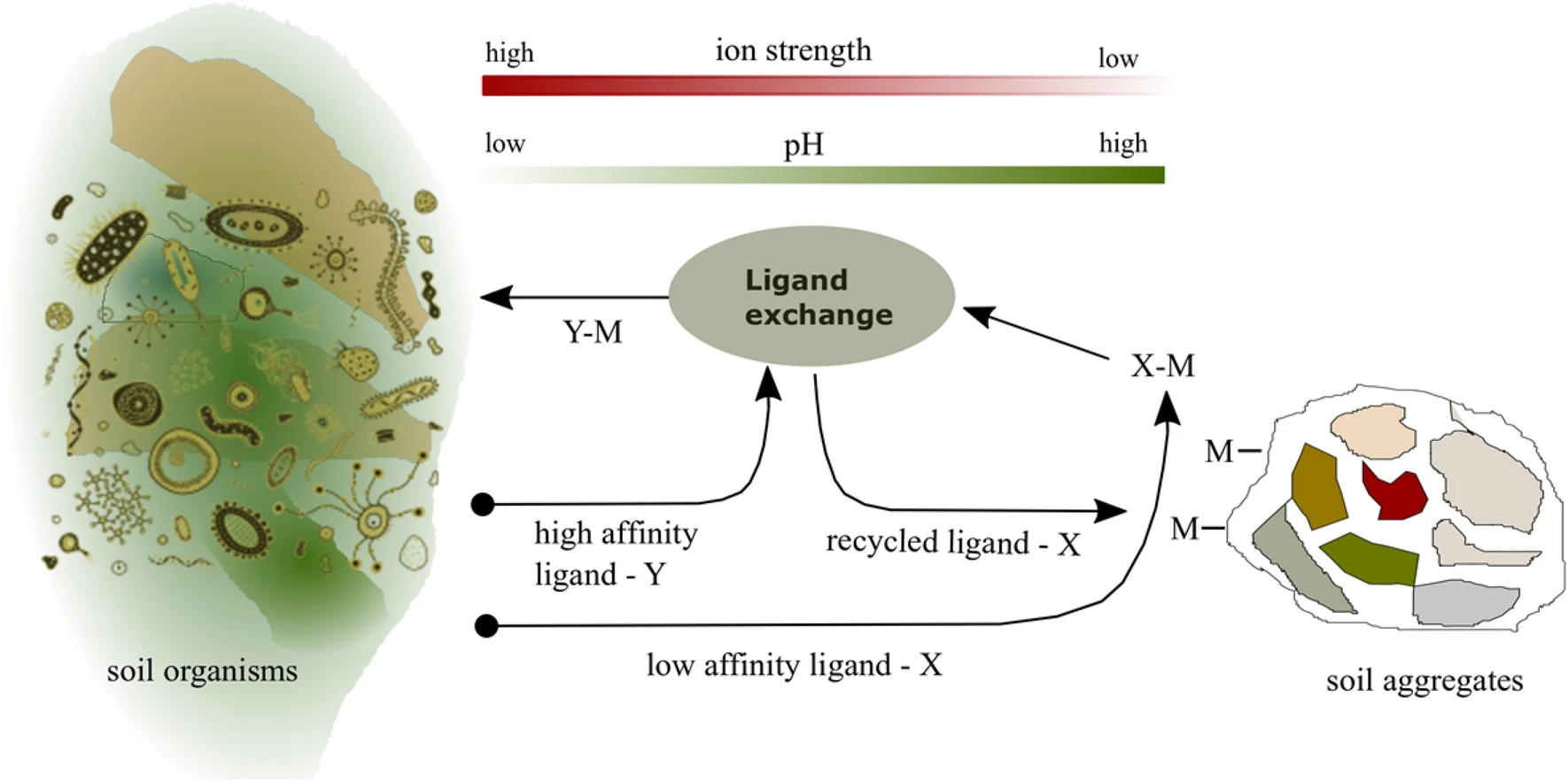published in Scientific Reports is explaining how weak and strong ligands interact …

Citrate (Cit) and Deferoxamine B (DFOB) are two important organic ligands coexisting in soils with distinct different affinities for metal ions. It has been theorized that siderophores and weak organic ligands play a synergistic role during the transport of micronutrients in the rhizosphere, but the geochemical controls of this process remain unknown. Here we test the hypothesis that gradients in pH and ion strength regulate and enable the cooperation. To this end, first we use potentiometric titrations to identify the dominant Zn(II)–Cit and Zn(II)–DFOB complexes and to determine their ionic strength dependent stability constants between 0 and 1 mol dm−3. We parametrise the Extended Debye-Hückel (EDH) equation and determine accurate intrinsic association constants (logβ0) for the formation of the complexes present. The speciation model developed confirms the presence of [Zn(Cit)]−, [Zn(HCit)], [Zn2(Cit)2(OH)2]4−, and [Zn(Cit)2]4−, with [Zn(Cit)]− and [Zn2(Cit)2(OH)2]4− the dominant species in the pH range relevant to rhizosphere. We propose the existence of a new [Zn(Cit)(OH)3]4− complex above pH 10. We also verify the existence of two hexadentate Zn(II)–DFOB species, i.e., [Zn(DFOB)]− and [Zn(HDFOB)], and of one tetradentate species [Zn(H2DFOB)]+. Second, we identify the pH and ionic strength dependent ligand exchange points (LEP) of Zn with citrate and DFOB and the stability windows for Zn(II)–Cit and Zn(II)–DFOB complexes in NaCl and rice soil solutions. We find that the LEPs fall within the pH and ionic strength gradients expected in rhizospheres and that the stability windows for Zn(II)–citrate and Zn(II)–DFOB, i.e., low and high affinity ligands, can be distinctly set off. This suggests that pH and ion strength gradients allow for Zn(II) complexes with citrate and DFOB to dominate in different parts of the rhizosphere and this explains why mixtures of low and high affinity ligands increase leaching of micronutrients in soils. Speciation models of soil solutions using newly determined association constants demonstrate that the presence of dissolved organic matter and inorganic ligands (i.e., bicarbonate, phosphate, sulphate, or chlorides) do neither affect the position of the LEP nor the width of the stability windows significantly. In conclusion, we demonstrate that cooperative and synergistic ligand interaction between low and high affinity ligands is a valid mechanism for controlling zinc transport in the rhizosphere and possibly in other environmental reservoirs such as in the phycosphere. Multiple production of weak and strong ligands is therefore a valid strategy of plants and other soil organisms to improve access to micronutrients.